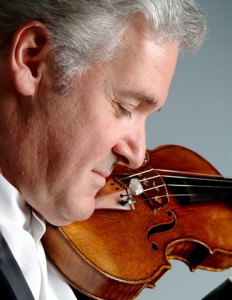The Hong Kong Ballet Group's production of La Sylphide provided a breath of fresh air in a stifling Sunday August afternoon. The annual major production of the Group is a collaborative effort across local arts bodies and dance companies -- bringing together a myriad of talents such as guests principal dancers Xu Gang (Principal Dancer and Ballet Master of the National Ballet of China), Tasha Wong (Principal Dancer of the Singapore Dance Theatre) and student dancers of various ballet schools in Hong Kong.
Artistic Director Yuri Ng restaged the famous work that was the first ballet to express the Romantic philosophy, after Danish choreographer August Bournonville's re-arrangement on 1836 to the beguiling score by Hermann von Lovenskjold. When the ballet was first performed in 1832, the social reform that had brought in the Industrial Revolution was devolving into soot and squalor, and the Romantic poets began writing about the loss of nature in a world being built upon coal and steel. Putting feeling over intellect and passion over restrained judgement, artists were encouraged to create not merely what the eyes saw but also what the heart felt.
Set in the Scottish highlands where fairy creatures live, it is a story of a Scottish farmer James, played by Xu, who looked into a transcendent dream world in search of eternal love that proved fruitless and as difficult to hold as a dream. Just before his wedding, he falls in love with a magical Sylph, played by Wong, and leaves his bride-to-be for her. Having been rejected at the wedding party, Madge the witch gives James a magic scarf and tricks him into believing that the Sylph will be his forever once he wraps it around her. The ballet came to a tragic ending as the Sylph dies in James’ arms after the scarf encircled her.
Xu played the part of the tortured protagonist with much presence and conviction. His steadfast performance commanded attention and captured the imagination of the audience. His demanding jumps were well executed and his footwork crisp and precise given a physique of considerable height. Wong, known for her grace and fluidity, portrayed the fleeting winged Sylph. Aside from her renowned technical skill, her intricate facial expressions conveyed the inner conflicts and torment of the tragic heroine. In the opening scene, both principal dancers were slightly off balance in a few turns (Wong turned out to have been suffering from a leg injury) but quickly settled in to give a solid performance. The success of the production owed much to the performance quality of the two principal dancers who both have a wealth of leading role experiences.
The corps de ballet was made up of students from ballet schools from around Hong Kong. This is a commendable effort on the part of the Group in bringing together young talents who are given the opportunity to show-off their hard work, learn from each other and from the professionals. There is no better form of reward for students of art to exhibit the fruits of their labour than to be involved in the exhilaration and glamour of a live stage performance.
Seldom does a theatrical scene surpass the mystical and lyrical beauty of the second act of La Sylphide, where the woods, the place where the Romantics commune with nature, is laced with the haunting and fleeting long white tutus of the ethereal fairies. In order to portray the unearthly quality of the winged sprites, there is a heavy emphasis on pointe work. We learnt that it is this ballet that established the technique’s prominence in the history of ballet. Also worthy of note is that ballet before the nineteenth century had been centered on male athleticism after neo-Grecian rationalism. The first choreographer of La Sylphide, Filippo Taglioni, cast his daughter Maria as the sylph and in one strike, the superb dancer redefined ballet and ushered in the age of the prima ballerina.
The success of the production owed much to the full-size and professional set that the Hong Kong Ballet Company bestowed to the Group, another example of how constructive sharing of resources can be achieved in the tight-budgeted arts field. Creative use of lighting was another element that contributed to the mystique and atmosphere of the forest.
In the second half, some 100 student-dancers performed the Pas de Six and Tarantella from Napoli, another celebrated work of Bournoville. These robust youngsters strived eagerly to show-off their jumps and solo sequences, culminating in the exciting tarantella, where hordes of young dancers in colourful character skirts and tambourines decorate the stage like eye candy jumping in joy.
The delightful production and the collaborative efforts behind marked a productive and satisfying summer for both the performers and the audience alike. This is the kind of the project that provides excellent training ground for young people to develop their expression, confidence, discipline and commitment. Like all good art productions, it is a celebration of life and an exhibition of human talent at its best.
本網站內一切內容之版權均屬國際演藝評論家協會(香港分會)及原作者所有,未經本會及/或原作者書面同意,不得轉載。









